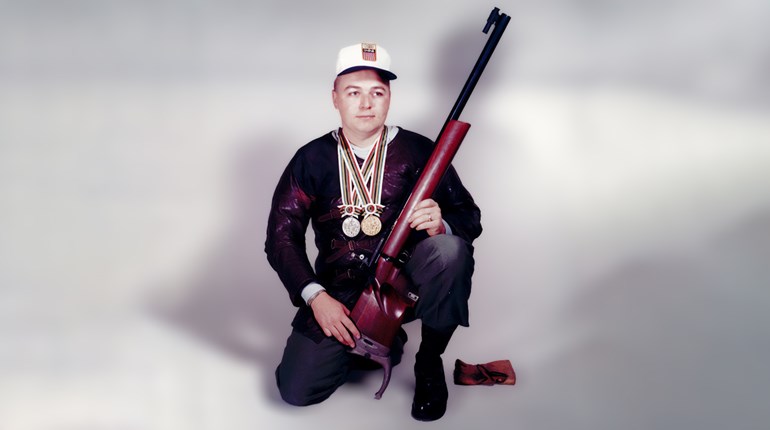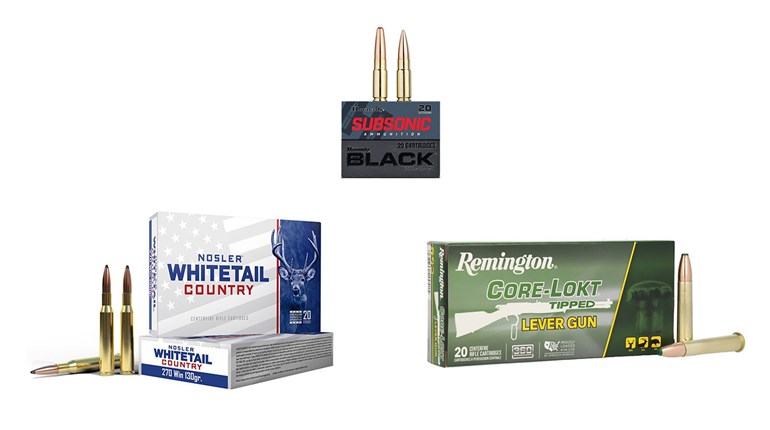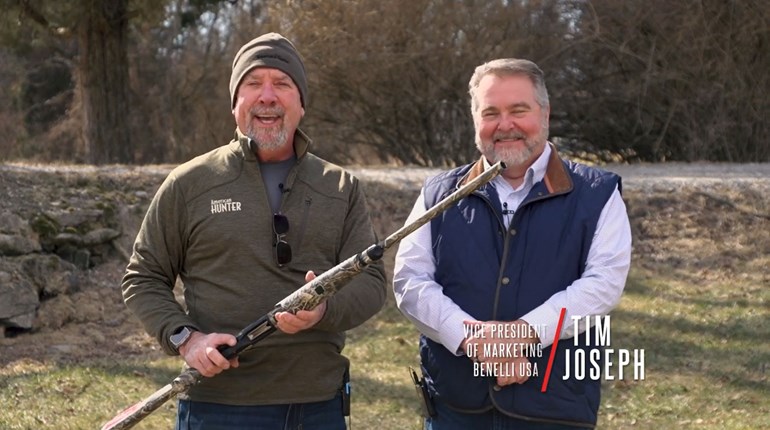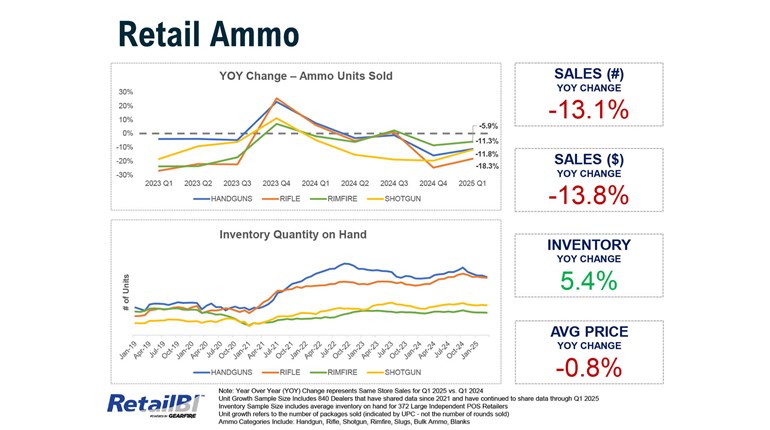
In this, their 150th year in business, the history of Winchester firearms is well known. After all, “The gun that won the west” was a Winchester, the Model 1873. The Winchester Model 70 is known as the “Rifleman’s Rifle” and the Model 1894 is perhaps the most successful sporting rifle in history. The company also shook up the scattergun market with classic shotguns like the Model 1897, Model 21 and Model 12.
The raw truth, however, is that none of these guns could have made their mark in history without ammo to shoot out of them. It’s kind of the red-headed stepchild in terms of glory and glamor, but Winchester has been in the ammo business as long as it has been in the gun business.
The story of how Oliver Winchester built his company on the success of the Henry rifle is the stuff of legend. We like our history clean and uncluttered, and like most legends it leaves out the nasty parts. Parts like how the Winchester 1866, the gun that launched the Winchester Company, was created to circumvent Henry’s patents and to cut him out of the deal. I will note that the 1866 used the same 44-caliber rimfire cartridge as the Henry. So you might say that the company launched with that cartridge.
The 1866 was replaced with the Model 1873 and was chambered for Winchester’s first centerfire cartridge, the .44-40 or .44 WCF as it was called then. This new cartridge was reloadable, which was important to its success. With the non-reloadable rimfire the only way to replenish your ammo supply was to buy new cartridges, which could be hard to find on the frontier. But lead, powder and, for the most part, primers worked for reloading any and all centerfire cartridges and were more easily found. This alone was a huge factor in exploring the country and in western expansion. From that humble beginning Winchester went on to introduce a dizzying array of cartridges. The larger frame 1876 model alone came in .45-75 Winchester, .40-60 Winchester, .45-60 Winchester and .50-95 Winchester Express.
A quick count comes up with 37 obsolete centerfire cartridges with the Winchester name on them, ranging from the .22 WCF through the .70-150 Winchester, although only one gun was made for the latter. Still in production for centerfire rifle cartridges, I count 29 with the Winchester name. Among them are some of the most popular cartridges in use today, like the .30-30 Winchester, .270 Winchester and .308 Winchester. With rimfire I count four, two obsolete and two still in production. Same deal with handguns, four cartridges. Two are current (barely) and two obsolete. I think it’s safe to say that Winchester was, is and will be a powerhouse in ammunition.
Here are a few highlights from the early years:
• Winchester entered the shotshell market in 1886 with Rival brand ammo in 10, 12, 14, 16 and 20 gauge.
• In 1890 they introduced the .22 Winchester Rimfire cartridge (now obsolete). This was in conjunction with the introduction of the Model 1890 pump-action rifle.
• In 1895 Winchester introduced the first smokeless powder commercial cartridges, .30 WCF and .25-35 WCF. (The .30-40 Krag pre-dated them by three years, but was a military cartridge.) Winchester changed the world with the .30 WCF, more commonly called the .30-30 Winchester, as it remains one of the most popular rifle cartridges on the market.
• Not only did these new cartridges use smokeless powder, but they attained higher velocity by using guiding metal jackets on the bullets. They laid the groundwork for all of today’s bottle-neck sporting cartridges.
• In 1921 Winchester introduced Super-X brand shotshells and in 1925 they introduced the .270 Winchester, one of the most popular rifle cartridges ever developed.
• A big boost to the ammo side came after Winchester Repeating Arms Company went into receivership and was bought by the Olin family's Western Cartridge Company on December 22, 1931.
• In 1939 they introduced the “Silvertip” rifle bullet which remains popular even today. In 1952 they introduced the .308 Winchester, one of the most popular cartridges of all time.
A few other highlights of new cartridges during that period include:
• 1955: .243 Winchester and .358 Winchester (two of my favorite cartridges.)
• 1956: .458 Winchester Magnum.
• 1958: .264 Winchester Magnum & .338 Winchester Magnum.
• 1959: .22 Winchester Magnum Rimfire.
• 1963: .300 Winchester Magnum
In 1961 Winchester introduced the very popular Power-Point bullet, designed for hunting thin-skinned game. In 1963 they started using Grex granular plastic buffer in buckshot and later added it to birdshot loads, which changed how we think about shotgun patterns. In 1965 they launched the AA shotshell, a one-piece compression-formed hull that could stand up to multiple reloadings and it quickly became the favorite of trap and skeet shooters. In 1976 Winchester was the first to introduce non-toxic steel shot shotshells. In 1979 they introduced Silvertip high-performance defensive pistol ammunition in .45 ACP and 9mm.
Labor problems, including a strike in 1979–1980, led Olin to get out of the gun business. In December 1980 the New Haven plant was sold to its employees and incorporated as the U.S. Repeating Arms Company. Predictably, the company went bankrupt in 1989 and was acquired by a French holding company. Later it was sold to the Belgian Herstal Group, which owns Fabrique Nationale d'Herstal (FN) and Browning Arms Company. Olin Corporation kept the ammo company and continued to introduce innovation to the ammo marketplace.
In 1991 Winchester introduced the Super-X BRI Sabot Slug, changing the market forever as today sabot slugs are the standard. In 1993 they introduced Supreme Fail Safe rifle ammunition, which had one of the most technologically advanced hunting bullets ever developed.
In 2001 Winchester again shook up the rifle cartridge world with the introduction of the .300 WSM (Winchester Short Magnum). The .270 WSM and 7mm WSM followed soon after, while the .325 WSM launched in 2004. In 2002 they introduced the Winchester Super Short Magnums with the .223 WSSM and .243 WSSM, while the .25 WSSM followed in 2004.
In 2011 they again stepped outside the box with Blind Side Steel shot. This used a unique hex-shaped pellet. It was named ammo product of the year by American Hunter. The next year they created their first rifle ammo for single species use, the Razorback XT, designed for hunting wild hogs.
Winchester stuck a toe back into the rimfire market in 2013 with the introduction of the .17 Winchester Super Magnum. At 3,000 fps, it is the highest velocity rimfire cartridge ever made. In 2014 Winchester came out with yet another unique shotshell concept. Long Beard XR Turkey hunting ammunition uses what they call Shot-Lok technology. The shot is encapsulated in a liquid resin that hardens and contains the shot charge in a single projectile until it exits the bore. Keeping with the single species concept, in 2015 Winchester introduced Deer Season XP rifle ammunition with an easy expanding bullet that uses a large polymer tip.
Clearly, even after 150 years of making ammo Winchester is still shaking up the industry with innovation.


































